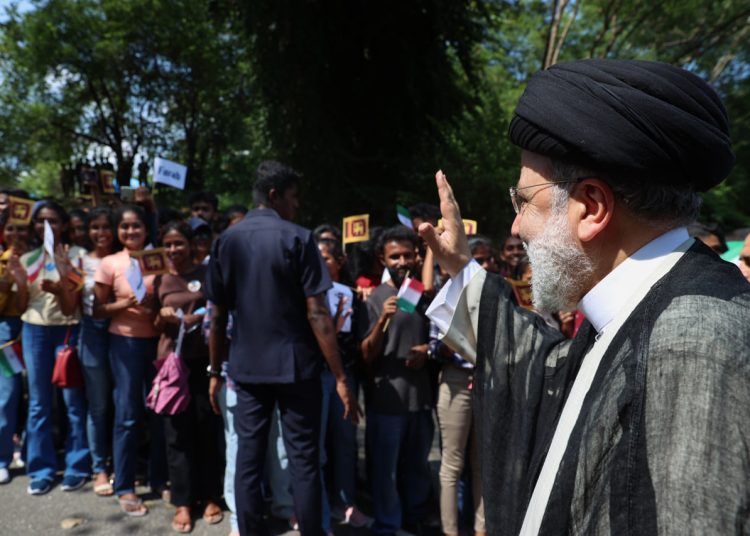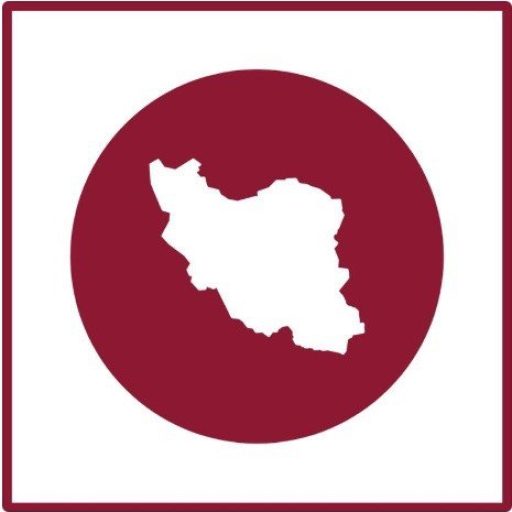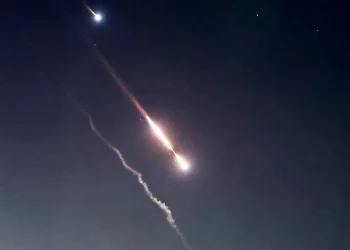Today, on a Wednesday, the President of Iran, Ebrahim Raisi, visited Sri Lanka. This one-day yet significant visit was initiated upon the invitation of his Sri Lankan counterpart, aiming to fortify the bonds and collaborative endeavors between Tehran and Colombo.
During this visit, officials from both nations ratified five documents of cooperation.
This occasion represents the first sojourn of an Iranian President to Sri Lanka since the year 2008, recalling when Mahmoud Ahmadinejad embarked on a diplomatic journey encompassing Pakistan, Sri Lanka, and India in the month of May.
Historically, Iran has been a collaborator with Sri Lanka on defense initiatives and continues to extend its support through technical and engineering services, notably in sectors such as water transfer and power generation.
The “Uma Oya” project, a multifaceted endeavor in Sri Lanka, stands as a testament to the scale of Iran’s export of technical and engineering services, encompassing dam construction, water transfer, and electricity generation. This monumental project, valued at 500 million dollars, has been financially underwritten by the Sri Lankan government. The current visit by President Raisi also included the ceremonial inauguration of this project.
In relation to this, the Iranian Minister of Energy, Ali Akbar Mehrabian, articulated the project’s benefits, “The annual generation of 290 gigawatt-hours of energy, the irrigation of 5,000 hectares of arid agricultural terrain in southeastern Sri Lanka, and the redistribution of 145 million cubic meters of water from wetter regions to parched areas”.
Highlighting the Iranian government’s ambition to proliferate its technical and engineering services on an international scale, Minister Mehrabian projected that revenues from such exports are poised to reach 5 billion dollars within the forthcoming two years.
In a previous engagement, President Raisi had the opportunity to meet with his Sri Lankan counterpart during a visit to New York in September of the preceding year. Further cementing diplomatic ties, Hossein Amirabdollahian, the Foreign Minister of Iran, paid a visit to Colombo in March, engaging with various Sri Lankan dignitaries, including the Prime Minister. Prior to this, the Foreign Minister of Sri Lanka had also made a visit to Tehran in the preceding summer.
Sri Lanka’s economic landscape is predominantly anchored in agriculture, services, and light industries, with exports chiefly comprising tea, garments, rubber, coconut derivatives, gemstones, and jewelry. Conversely, the nation’s import spectrum includes petroleum, consumer goods, industrial apparatus, foodstuffs, and vehicles. The country boasts a hybrid economy where both private and public sectors contribute to the production matrix.
In a recent economic update, the International Monetary Fund heralded Sri Lanka’s economic resurgence, noting a substantial reduction in inflation from 70% in 2022 to 5.9% as of February this year.
Tourism, a burgeoning industry within Sri Lanka, has witnessed a remarkable uptick, with revenues surpassing 2 billion dollars in 2023, marking a considerable increment from the previous year. In anticipation of a surge in Iranian tourists, Mahan Air has been granted authorization for direct flights between the two nations. In the year 2022, Iran was distinguished as the 27th most prolific source of international tourists to Sri Lanka, showcasing an ascent from the prior year. As of June 2023, Sri Lanka has welcomed 5,973 Iranian visitors.
The diplomatic rapport between Iran and Sri Lanka was initiated in 1961 via Sri Lankan embassy in Islamabad, Pakistan, culminating in the establishment of the Sri Lankan embassy in Tehran in 1990 and Tehran’s representative office in Colombo in 1975.
Both nations have maintained a cooperative stance within the United Nations and its affiliated bodies, offering mutual support on shared concerns. They are members of several international and regional consortia, including the Asian Cooperation Dialogue (ACD), the Non-Aligned Movement (NAM), and the Indian Ocean Rim Association (IORA).






